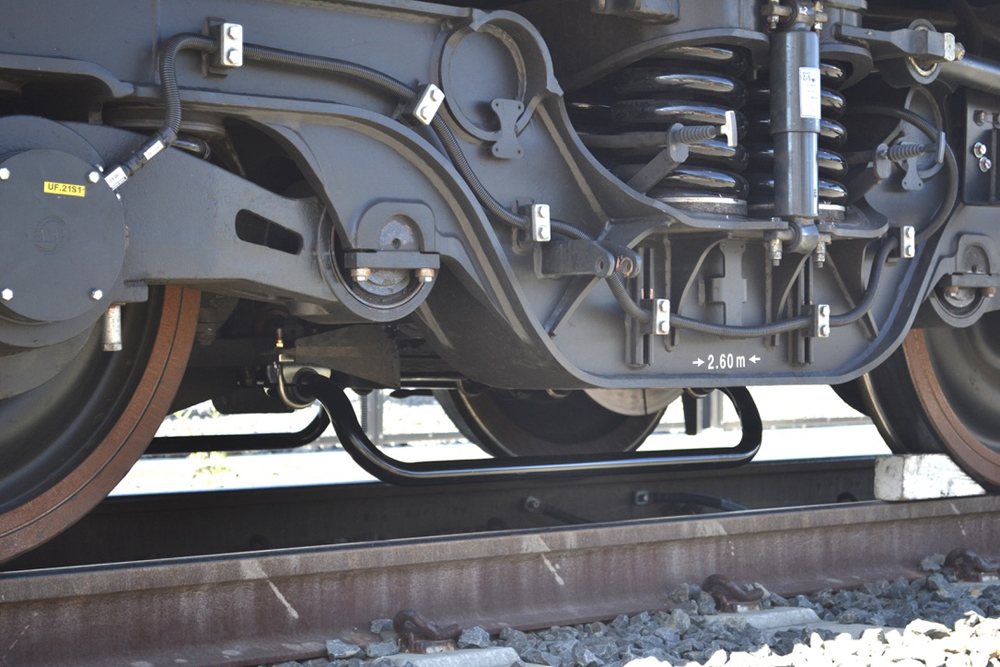Trains News Wire
Seeking answers on ‘loss of shunt:’ Special Report
By Bob Johnston | September 6, 2023
Canadian National takes the lead to fix problem afflicting certain routes
 Track circuit assistor antennas are mounted over both rails on each truck of a test locomotive to create a circuit for signal detection. Unipart
Track circuit assistor antennas are mounted over both rails on each truck of a test locomotive to create a circuit for signal detection. Unipart
EFFINGHAM, Ill. —The latest round of tests investigating ways to ensure trains always activate track circuits — the process known as “shunt” — involves shunt-enhancing antennas mounted on both trucks of a state-owned locomotive in Amtrak service in California.
Here’s how the antennas work on F59PHI locomotive No. 2007: Using electricity supplied by the locomotive in an 11-mile test zone, a specially designed track circuit assistor (TCA) antenna is mounted near each running rail. The TCA antenna induces current into the rails, creating an electrical circuit for signal detection that may not otherwise be reliably transmitted through the train’s wheels. The idea is to create a dependable shunt on the locomotive to obviate the need for axle counts, speed restrictions, or certain types of equipment currently used to address loss-of-shunt issues.
Canadian National has been sponsoring the tests over the last several years, with financial and technical assistance from Amtrak, the Federal Railroad Administration, the Illinois and California departments of transportation,and other Class I railroads.
In a lengthy statement to Trains News Wire, CN says, “Extensive testing up to this point indicates that the random loss of shunt detection events experienced by single-level passenger equipment in the US is due to the absence of sufficient contact area between the wheels of passenger trains and the rail head.
SNIP
As results of the latest Effingham test are being evaluated, CN says, “Preliminary data collected with both the TCA antenna system active and inactive, conclusively show improvement of the shunting profile with this device. With CN’s leadership, freight rail, passenger rail, lawmakers and regulators are now fully engaged in a conversation about measures to ensure safe signaling by passenger rail. We are on a path to implement future solutions to ensure enhanced safe operations.”
Additional tests are ongoing. Trains News Wire will cover further developments.
More here.













